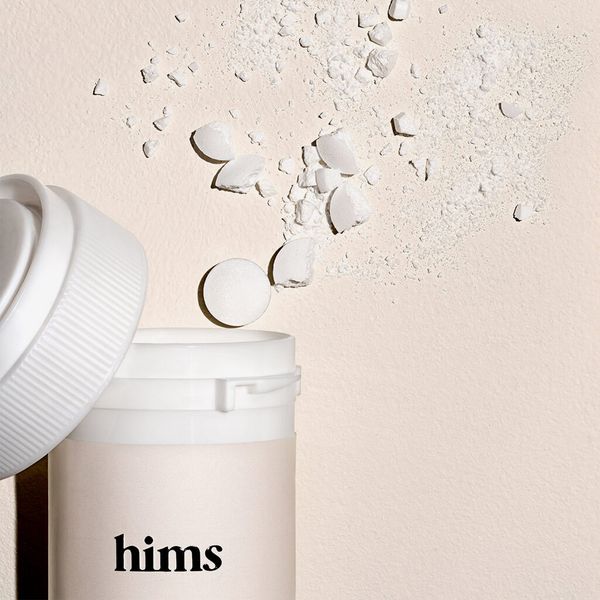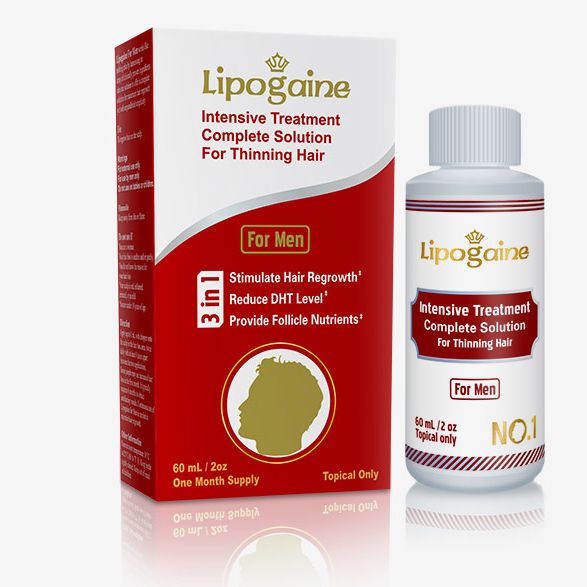Excellent Tips and Products for Hair Growth
A few good articles about best hair loss treatment products (with hair growth products listed below):
What Is Hair Loss?
When washing or brushing your hair, you might notice a significant amount of hair strands lifting away from the scalp. Don’t panic—that’s likely not hair loss. According to Dr. Dominic Burg, chief scientist and trichologist at évolis professional, it’s completely normal to lose up to 100 hairs a day. “If this sounds like a lot, you have to remember that you have around 100,000 to 150,000 hairs on your head, so this only represents 0.001% of your total hair,” he assures. “After they fall they are generally replaced by a new hair growing in its place,” Dr. Burg adds.
So, what is hair loss? “Hair loss describes the gradual or sudden loss of actively growing hair follicles on the scalp, usually following a change in the hair growth cycle,” explains Dr. Burg. To understand hair loss, it’s important to understand this growth cycle. “The hair cycle is a repeating pattern of growth, rest and fall that happens many times over your life, with the average hair cycle being six or seven years in length,” Dr. Burg says. That said, this cycle is not in unison. “The hair cycles asynchronously, with each hair following its own timing and pattern.”
At the center of the hair cycle and hair growth are the hair follicles. “Hair follicles are actually little organs—much like any other organ in your body—and like other organs, are made up of different parts that do different jobs,” says Dr. Burg. “Ultimately, hair follicles are little machines geared up to manufacture hair shafts out of keratin. The follicles have to work extremely hard to do this 24/7, burning a lot of energy in the process,” he notes. “The body’s control over the process is complex, and like anything complex, it can be quite easy to disrupt the balance and for things to go a little awry. This is the root cause of hair loss and thinning,” he explains.
According to Dr. Burg, most forms of hair loss are caused by a shortening of the growth phase during the hair cycle. “When the growth period becomes too short, hair falls out quickly, excess shedding occurs and the regenerating hair comes in finer and is less substantial,” he notes...
Read more at: https://www.dermstore.com/blog/top_ten/9-best-hair-loss-products-for-women/
If you’re a gentleman who has been noticing a receding hairline or is worried about balding, the first step is to schedule a visit (or phone consultation, for the time being) with a doctor or dermatologist and make sure your hair loss isn’t a sign of a more serious health issue. “Not all hair loss is male-pattern hair loss,” explains Dr. Marc Glashofer, a board-certified dermatologist specializing in hair loss who practices in northern New Jersey. A thyroid disorder, an autoimmune disease, or even a scalp issue could be the cause of a hairline resembling Bruce Willis’s in Die Hard 2. But most hair loss is androgenetic alopecia, also known as male-pattern baldness, and fortunately (or not, depending on your perspective), it’s just a symptom of getting older.
Once male-pattern baldness starts, it’s not going to stop, though the rate at which this happens differs from person to person and depends on genetics. And since the grind of hair loss is unending, it’s important to start treatment as soon as your hairline starts bothering you. If you’re looking for a more quantitative metric, Dr. Paul McAndrews, a clinical professor of dermatology at the USC School of Medicine and member of the International Society of Hair Restoration Surgery, told us that “you have to lose half your hair before the human eye can tell.”
We spoke to McAndrews and 11 other doctors and dermatologists about the most effective products to treat hair loss, including topical foam, oral medication, and even a laser comb. (Of course, if you don’t care about losing your hair and are fine with going full Prince William and shaving your head, go for it. We’ve got some recommendations for razors and hair trimmers to help you out on that front.) If some of the following items look familiar, that’s because, since we last updated this article, the best-in-class over-the-counter hair-loss treatments really haven’t changed, according to all of our experts. (Medical procedures for fighting hair loss may be getting more advanced, but Dr. Corey Hartman of Skin Wellness Dermatology explains that there “have not been breakthroughs in terms of topical and oral products, in part because the ones we have work in a pretty decent way.”) That said, we’ve restructured the list to reflect the fact that many of our experts say there are two products you should really take in tandem if you seek the most effective treatment (one is for preventing loss, the other for promoting growth, and we’ve deemed both “best overall.”)
Before we dive in, a note about hair-growth shampoos and vitamins: There is less evidence supporting the efficacy of any hair-growth shampoos that claim to block DHT (dihydrotestosterone), a hormone responsible for shrinking hair follicles, which ultimately leads to hair loss and eventually baldness. Dr. Evan Rieder, a dermatologist in the Ronald O. Perelman Department of Dermatology at NYU Langone Health, is skeptical that you’re going to see any tangible benefits by rubbing DHT blockers into your scalp. “I find it very difficult to believe that something that’s applied to the scalp and rinsed off is going to have any appreciable effect,” he says. Four experts also say not to put much faith (or money) into hair-growth supplements or vitamins that promise to help promote hair growth or stop hair loss — though a couple hypothesized that vitamins or supplements could lead to hair regrowth if your hair loss was a result of a nutritional deficiency. Otherwise, says Dr. Amy McMichael, a professor and the chair of Wake Forest Baptist Medical Center’s dermatology department, “there is no such thing as a ‘hair vitamin’” for male-pattern baldness.
Best overall product to prevent hair loss
If you decide to start treatment to save your hair, a good place to start is with minoxidil, most commonly sold as Rogaine, which came recommended as the first line of defense by every expert we spoke to. Don’t expect this hair-loss treatment to create luscious locks; minoxidil is better at slowing down or preventing more loss rather than promoting hair growth. But, according to McMichael, it is effective “if used as recommended, with evidence of improvement seen around six to nine months” — a sentiment echoed by hair-loss specialist Dr. Marc Avram, who recommends giving it at least eight months to judge efficacy. Simply massage the foam or solution into your scalp once or twice daily, and for best results, use a formula like Rogaine’s with a 5 percent concentration. Dr. Oma Agbai, the director of multicultural dermatology at UC Davis, warns that “some people will experience an increase in hair shedding during the first few weeks of treatment,” but promises this is temporary and “a sign that the treatment is working.” (She adds: “As long as there is no itching or burning of the scalp associated with applying minoxidil, the treatment can be continued safely.”)
Three of our experts specifically recommend this Rogaine foam, which Avram says has “been around forever” and which Dr. Douglas D. Altchek, the founder of Altchek Dermatology, says is “very reliable and remains the mainstay of topical treatments for male-pattern baldness.” Avram also has this tip: “Clinically, it works in the front and back,” so feel free to apply the foam to the crown of the head as well as the hairline.
Best overall product to promote hair growth
The other main hair-loss treatment recommended by seven of the dermatologists we interviewed is finasteride, which is taken orally and often called by its brand name, Propecia. The FDA-approved brand-name medication is available only with a prescription, but these days, finasteride is easily found as a generic and can be ordered online after a virtual consultation through start-ups like Hims, Keeps, and Lemonaid. Finasteride restrains an enzyme that converts testosterone to DHT, the hormone that causes hair loss in men, and unlike minoxidil, this drug can actually help hair grow back as well as prevent further loss. All you have to do is take one pill a day, according to Rieder, who says that two-thirds of men taking this treatment will see improvement in hair density over time.
Six of the experts we spoke to recommend combining finasteride with Rogaine for the maximum effect. While Rogaine remains his first recommendation, Altchek told us that adding finasteride “may potentiate the effect,” seeing as finasteride will help more hair to grow at the same time that Rogaine is helping prevent additional loss. McAndrews calls the combination of orally administered finasteride and topically applied minoxidil a “full-court press” against hair loss. “That’s doing the most you can for preventative medicine.” Rieder also notes that taking both drugs together is more effective, as does Hartman, who says that the combination “seems to have a better result than taking any one alone.”
Best liquid product to prevent hair loss
Read mroe on: From: https://nymag.com/strategist/article/best-mens-hair-loss-treatments.html







Comments
Post a Comment